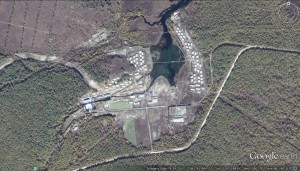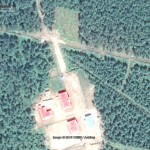韩旺投资集团有限公司
Heuimang Investments Group Ltd (In Chinese pinyin Han Wang Touzi Jituan Youxian Gongsi)
公告 Announcement:
发布时间:2015-8-2
朝鲜民主人民共和国(朝鲜)致力于大力推进其经济发展,并欢迎外国投资参与该国的世界级的机会, 促进经济发展.
The DPRK is committed to progressing its economic development, and welcomes the participation of foreign companies in investing in world class opportunities in the country.
朝鲜欢迎中国的公司投资参与. 朝鲜通过它在新加坡注册的窗口公司Daegian 私人有限公司, 与中铁多经投资集团有限公司合作在香港建立了融投资平台—招商公司.
The Democratic People’s Republic of Korea (DPRK) through its window company Daegian Pte Limited of Singapore in cooperation with China Railway Investments Group Ltd (CRIG) has established a joint venture investment company in Hong Kong.
朝鲜政府已正式批准Daegian 与中铁多经投资集团有限公司(CRIG)合作成立旺投资集团有限公司.
The DPRK Government has formally approved the joint venture between Daegian and CRIG and their joint venture company called Heuimang (or Han Wang in Pinyin Chinese) Investments Group Limited.
Daegian和韩旺是朝鲜”走出去“、”引进来“的直接和专属通道,是朝鲜政府最高等决策层的直属机构. 只有最显著的机遇将可通过这一渠道,而且只能通过韩旺办理.
Daegian provides a discrete, direct and exclusive conduit to the highest levels of decision making in the government of the DPRK. Only the most significant of opportunities will be available through this channel which can only be accessed through Heuimang/Han Wang.
朝鲜决定与中方共同搭建经贸等合作更方便更快捷的工作平台,利用香港的优势宣传推广、项目招商、商务服务,支援朝鲜建设。韩旺将在中朝两国间发挥经贸合作的强大和充满活力的桥梁作用.
Heuimang/Han Wang will concentrate on creating a strong and robust platform for economic and trade co-operation between the countries. It will also take advantage of the flexibility afforded to a commercial entity registered in Hong Kong.
各方股东及合作公司将依照国际法和国际惯例运作,在透明的基础上配套韩旺发展.
All parties to this joint venture are committed to supporting Heuimang/Han Wang in operating on a transparent basis within international laws and practices.
其主要目标是优势互补、资源共享、利益均沾、合作共赢、商业运作.
The primary objective is commercial engagement through mutual cooperation for shared benefit.
里程碑:
Milestones:
2015年1月29日: 中铁和Daegian 签订了框架合作协议, 其中确定了互惠和显著利于中国和朝鲜,尤其是基础设施发展的若干项目. 通过韩旺, 中铁致力于引领中国企业组成的联合体参加朝鲜民主人民共和国的经济和基础设施发展.
January 29, 2015: CRIG and Daegian executed a framework cooperation agreement which identified certain projects of mutual and significant benefit to China and the DPRK, particularly infrastructure development. CRIG is committed to lead through Heuimang/Han Wang a consortium of investors from China to participate in the economic and infrastructure development of the Democratic People’s Republic of Korea.
2015年3月20日:中铁和Daegian签署公约设立融投资控股公司,以协调和管理投资朝鲜.
March 20, 2015: CRIG and Daegian signed a convention to establish an investment holdings company to coordinate and manage investment in the DPRK.
2015年4月8日: 朝鲜政府的执行委员会正式批准为创建韩旺作为的中铁和Daegian 之间的合作平台公司.
April 8, 2015: The Executive Committee of the DPRK Government granted formal approval for the creation of Heuimang/Han Wang as the joint venture company between CRIG and Daegian.
这是中国- 朝鲜最高领导人讨论2010年5月的巅峰之作, 于经贸合作,成立一个指导委员会,共同开发和管理提名的项目, 包括特别经济贸易区.
These represent the culmination of China-DPRK economic and trade cooperation discussions dating back to May 2010, when the top leaders of both countries established a steering committee to jointly develop and manage nominated projects,including special economic trade zones.
基本的经济发展计划是底层要求支持能力建设,机构规划和物流相关立法的起草工作。此外,为提高海关程序,通信和赞助农业和其他指定项目在朝鲜.
Fundamental to the programme is the underlying requirement to support capacity building, institutional planning and logistics and the drafting of relevant legislation. Also, to improve customs procedures, communications and sponsor agriculture and other specified projects in the DPRK.
中国和朝鲜都致力于取得进展的合作和友谊通过鼓励基于一个企业的市场经济的互利两国人民.
China and the DPRK are committed to progressing their cooperation and friendship by encouraging an enterprise based market economy for the mutual benefit their two peoples.
韩旺利用中国政府鼓励中国企业“走出去”、以及建立境外经济贸易合作区的各种优惠政策,支持朝鲜建设,开发前述项目。
In supporting the DPRK in the development of the nominated projects (see below), China Railway will be taking advantage of the preferential policies of the Chinese Government’s ‘Go Global’ strategy and its model of ‘co-operation between nations’ to create Economic and Trade Cooperation Zones.
提名项目:
Nominated Projects:
下面的项目已被选定为首批发展:
The following have been selected for initial development:
1. 罗先经济贸易区等经济贸易区
Rason Economic Trade Zone and other Special Economic Trade Zones
2. 罗津港, 运输和物流
Rajin Port, Transport and Logistics
3. 东海岸高铁和互连服务
East Coast High-speed Rail and interconnecting services
4. 发电厂和服务
Power Generation
5. 国家石油和天然气战略计划,包括
National Oil and Gas Strategy, including
a. 现有的两个炼油厂和技术升级翻新
Refurbishment of the two existing refineries and technological upgrade
b. 更多的处理能力,存储和仓储设施建设,以满足当地和出口需求
Construction of more processing capacity and storage and warehousing facilities to meet local and export demand
c. 贸易销售和市场营销
Trade sales and marketing
d. 勘探和开采当地资源
Exploration and exploitation of local reserves
6. 黄金开采和加工;以及建立金银行
Gold mining and processing; and establishment of a gold bank
7. 稀土的开采和加工
Rare earth elements mining and processing
8. 金属和矿物开采和加工,包括:
Metals and minerals mining and processing including:
a. 铁钢 Iron and steel
b. 锌Zinc
c. 钨Tungsten
d. 锡Tin
e. 菱镁矿 Magnesite
f. 石墨 Graphite
g. 煤Coal
9. 电信和有线电视
Telecommunications & cable television
10. 互联网服务, 国家经济信息电子中心及电子支付平台
Internet services, a national information centre and electronic payment platforms
11. 金融服务,包括一个完整的商业全服务银行和保险
Financial Services including a full commercial full services bank and insurance
12. 农业包括菌草种植, 牛羊养殖和捕鱼,
Agriculture including bacteria grass, sheep and cattle breeding and fishing
和等项目,招商引资开发.
附加信息:
Additional Information:
罗先经济贸易区和罗津港: 由罗先经济合作局管理,位于朝鲜北东部,毗邻中国吉林省延边地区. 罗先的主要商业机会是罗津港,该港作为主要的物流和交通枢纽为东北亚的潜力. 中国、俄罗斯、蒙古承认其优点,罗津港可提供最北端的全年温水冷冻自由港. 俄罗斯和蒙古已经从罗津港运送大宗商品,通过铁路连结由俄罗斯建造的港区.
The Rason Economic Trade Zone and Rajin Port: is managed by the Rason Economic Cooperation Bureau, located in the North-East of DPRK, adjacent to the Yanbian area, Jilin province, China. The major commercial opportunity in Rason is the potential that Rajin port offers as a major logistics and transport hub for north-east Asia. China, Russia and Mongolia acknowledge the advantages that the northern most all-year round port can provide. Russia and Mongolia are already shipping bulk commodities from Rajin through a railway link built by Russia.
拟议的铁路连接新丝路网络,将为中国东部、俄罗斯、韩国、日本, 进入中亚欧洲及其他新兴经济体. 一个便捷的陆路货物通道,这将减少旅行时间只需15天,而不是原来45天的海上运输,太有吸引力了, 区域商家不能忽视.
A proposed rail connection to the New Silk Road network will provide Eastern China, Russia, South Korea and Japan access to the emerging economies of Central Asia and Europe beyond. A land route for the transport of goods that will reduce travel time to just 15 days as opposed to 45 days by sea will be too attractive for regional manufacturers to ignore.
罗先的潜力作为一个主要的工业和商业中心,是由计划的石油和天然气管道从西伯利亚到韩国釜山而增强. 坐落在通往发展最快、最具活力的世界经济区域上,它是一个可预见的展示,可以肯定的未来,罗先会成为最重要的区域之一。
Rason’s potential as a major industrial and commercial centre is further enhanced by the planned oil and gas pipeline from Siberia down to Pusan in South Korea. Situated as it is at the gateway to the fastest growing and most dynamic economic region in the world, it is a virtual certainty that Rason will become one of the most important cities in the region.
有许多小到中型中外合资企业已经建立在罗先. 这是肯定的, 由于贸易的增加, 这将很快被更大的企业来加盟。
There are many small to medium sized foreign joint ventures already established in Rason, which will soon be joined by larger enterprises that will inevitably follow as trade increases.
中国企业有数十家与朝鲜公司在进行经济和贸易活动,在建材、食品加工、机械、金融、投资、物流等领域谈判合作。交通运输集团,中国铁建集团,中国招商局集团,亚洲集团等大型企业纷纷表示了在罗先经贸等各领域的兴趣.
Dozens of Chinese enterprises are in negotiations with North Korean companies for economic and trade activities in building materials, food processing, machinery, finance, investment, logistics and other fields. Transportation Group, China Railway Construction Group, China Merchants Group, the Asian Group and other large enterprises have expressed interest in the Rason economic and trade areas.
中国的北大荒集团在朝鲜建立了一个高效的农业科技示范园区500公顷的水稻种植实验.
The Beidahuang Group of China set up a highly efficient agricultural demonstration zone, 500 hectares of rice growing experiments.
该商业机会将只能通过韩旺可用.
The commercial opportunities will only be available through Heuimang.
朝鲜国家石油和天然气战略: 是赖以投资者可以利用朝鲜的优越位置,并推出营销活动成为东北亚地区的重要平台。朝鲜有两个炼油厂,其中只有一个目前正在运作。
DPRK’s National Oil and Gas Strategy: is the platform upon which investors could take advantage of the DPRK’s location and launch a marketing campaign into north-east Asia. The DPRK has two refineries only one of which is currently operational.
在新义州的蓬华炼油厂每年生产的柴油和汽油约150万吨, 这是满足本地区的需求远不够的. 该炼油厂坐落在一个很好的位置,跨过鸭绿江丹东,那里有一个油码头和管道组成的国际网络的支线
The Bungwha [Ponghwa] Refinery in Sinuiju [Note: it is in Phihyon, not Sinuiju] produces about 1.5 million tonnes of diesel and gasoline a year which is well below local demand. It is well situated across the Yalu River from Dandong where there is an oil terminal and a spur line of an international network of pipelines.
韩旺拥有的授权权利,新指定的特殊经济贸易区,位于在鸭绿江河口的新都岛。这里是理想的建立一个油库和新的处理设施之地.
Heuimang holds rights to a newly designated special economic trade zone which is Sindo Island in the Yalu estuary. The site is ideal to create a tank farm and new processing facility.
罗先的胜利炼油厂在东北部,已有20多年经营,现停止,由于缺乏原料和适当保养及维修。它最初被设计为每年生产各种石油化工产品2.0万吨。罗津和罗先潜力将见证燃料和某些石化产品必须满足该地区日益增长的需求.
The Seungri Refinery in Rason in the north-east, has been silent for 20 years for a lack of feedstock and proper maintenance and repairs. It was designed to produce 2.0 million tonnes a year of a variety of petrochemical products. The potential that is Rajin/Rason will see a growing demand for fuel and certain petrochemical products in the region which must be met.
金属和矿物: 矿产开采和加工是朝鲜经济的支柱. 通过韩旺的国家协议的过程中,任期安全是有保证的,因为它的设计满足国际融资需求。有铁矿石,煤,金,菱镁矿,石墨,稀土元素和许多世界级的沉积物。
Metals and Minerals: mining and processing is the backbone of the DPRK economy. There are world class deposits of iron ore, coal, gold, magnesite, graphite, rare earth elements and many more. Through Heuimang’s state agreement process security of tenure is assured as it is designed to satisfy international financing requirements.
详细信息,请联系:
For more information, please contact:
(1) 与中铁投资集团有限公司, 主席, 王先生
Mr. Wang Jing, Chairman of China Railway Investments Group Ltd
电子邮件Email: [email protected]
(2) Daegian 私人有限公司, 主席, Rudi Sirr先生
Rudi Sirr, Executive Chairman of Daegian Pte Ltd
电子邮件Email: [email protected]
(3) 韩旺投资集团有限公司, 首席执行官, 沈思翠小姐
Jyn Sim Baker, Chief Executive Officer of Heuimang Investments Group Limited
电子邮件Email: [email protected]



